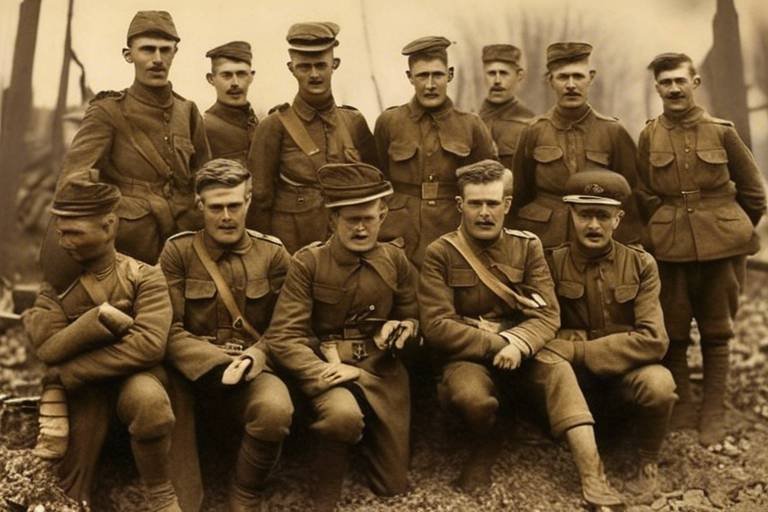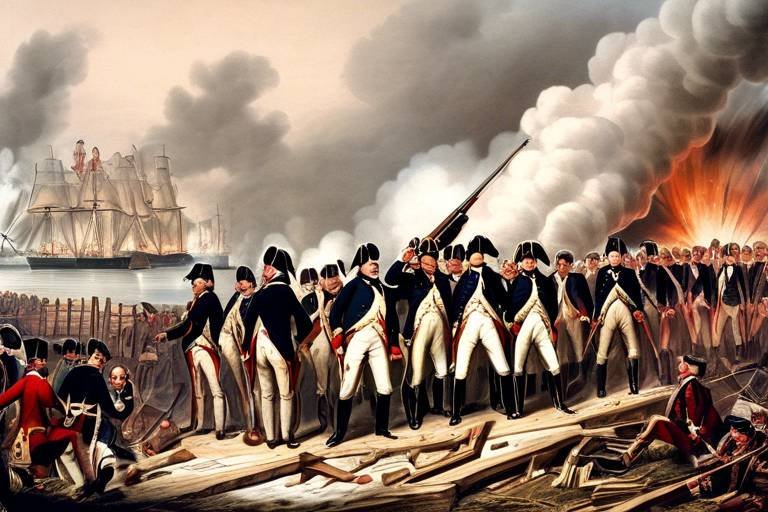The Historical Role of the Silk Road in Trade
The Silk Road holds a pivotal place in the annals of history, serving as a crucial conduit for trade that transcended borders and connected diverse civilizations. This ancient network of routes played a monumental role in shaping global commerce, fostering cultural exchange, and catalyzing economic growth through the exchange of valuable goods, innovative ideas, and transformative technologies.
Originating from the heart of China, the Silk Road sprawled across vast expanses, linking the East and the West in a tapestry of trade and interaction. Its inception marked a new era of connectivity, enabling the flow of goods, knowledge, and culture between distant lands. The Silk Road became a lifeline for merchants, adventurers, and scholars alike, paving the way for cross-cultural dialogue and mutual enrichment.
Traversing through rugged terrains and perilous seas, the Silk Road encompassed a myriad of key trade routes that crisscrossed continents. From the bustling markets of Samarkand to the bustling ports of Constantinople, these routes served as arteries of commerce, fueling the exchange of silk, spices, precious metals, and other coveted commodities that fueled the economies of empires and kingdoms.
The Silk Road was not merely a conduit for material goods but also a vibrant hub of cultural exchange and influence. Along its winding paths, diverse traditions, beliefs, and artistic expressions intermingled, giving rise to a rich tapestry of shared heritage. The Silk Road became a melting pot of ideas, where philosophies, religions, and languages intermingled, fostering a sense of interconnectedness and mutual understanding.
One of the most enduring legacies of the Silk Road lies in the transmission of technological innovations that revolutionized industries and societies. From the invention of papermaking and printing to the dissemination of agricultural techniques, the Silk Road served as a crucible of creativity and ingenuity, propelling progress and innovation across continents.
Despite its illustrious past, the Silk Road eventually succumbed to the winds of change, as political upheavals, the rise of maritime trade, and shifting power dynamics led to its gradual decline. However, the spirit of the Silk Road lives on, resonating in modern-day initiatives such as the Belt and Road Initiative, which seek to revive the legacy of connectivity and cooperation that defined this historic trade route.
In conclusion, the Silk Road stands as a testament to the enduring power of trade, cultural exchange, and innovation in shaping the course of history. Its legacy continues to inspire contemporary efforts to foster collaboration, bridge divides, and build a more interconnected world, where the echoes of the past reverberate in the corridors of the future.

Origins of the Silk Road
The Silk Road, a legendary network of trade routes that shaped the course of history, has its origins deeply rooted in the ancient civilizations of Asia and Europe. Dating back to around 200 BCE, this intricate web of pathways emerged as a result of the burgeoning trade relationships between the East and the West. The Silk Road was not just a physical route for the exchange of goods but also a conduit for the flow of ideas, cultures, and technologies.
At its core, the Silk Road was a testament to the human spirit of exploration and commerce, connecting distant lands and fostering economic prosperity along the way. The routes of the Silk Road stretched across vast territories, from China to the Mediterranean, traversing deserts, mountains, and seas. This interconnected network of trade played a pivotal role in shaping the economies of the regions it touched, fueling innovation and growth.
The Silk Road was named after one of its most prized commodities, silk, which originated in China and was highly sought after in the West. However, the trade along these routes extended far beyond silk, encompassing a wide array of goods such as spices, precious metals, textiles, and ceramics. This exchange of goods not only enriched the economies of the participating regions but also fostered cultural exchange and mutual understanding.
One of the key factors that contributed to the emergence of the Silk Road was the demand for luxury goods in the Roman Empire and other Western civilizations. This demand, coupled with the Chinese production of silk, created a lucrative trade route that spanned thousands of miles. The Silk Road became a melting pot of cultures, religions, and traditions, with merchants, travelers, and scholars traversing its paths in search of wealth and knowledge.
As the Silk Road evolved over centuries, it became more than just a trade route; it became a symbol of unity and diversity, connecting people from different corners of the world. The exchange of ideas and technologies along the Silk Road paved the way for significant advancements in fields such as astronomy, mathematics, and medicine. The legacy of the Silk Road continues to inspire modern-day initiatives aimed at fostering international cooperation and cultural exchange.

Key Trade Routes
Exploring the significant impact of the ancient Silk Road on global trade, connecting civilizations, facilitating cultural exchange, and shaping economies through the exchange of goods, ideas, and technologies.
Understanding the historical context and the beginnings of the Silk Road as a network of trade routes connecting East and West, fostering economic growth and cultural diffusion.
During its peak, the Silk Road encompassed a vast network of trade routes that interconnected various regions, playing a pivotal role in shaping the global economy. The primary land routes traversed through Central Asia, linking the prosperous markets of China with the wealthy empires of the Mediterranean. On the other hand, the maritime routes connected the bustling ports of the Mediterranean with the vibrant trade hubs of East Asia. These key trade routes not only facilitated the exchange of goods but also served as conduits for the transmission of ideas, cultures, and technologies, transforming the commercial landscape of the ancient world.
Exploring the diverse range of goods traded along the Silk Road, such as silk, spices, precious metals, and technologies, highlighting the role of these commodities in shaping economies and cultures.
Discussing the cultural interactions and exchanges facilitated by the Silk Road, including the spread of religions, languages, art, and philosophies, fostering a rich tapestry of diversity and interconnectedness.
Investigating the transfer of technologies and innovations along the Silk Road, from papermaking and printing to agricultural techniques, revolutionizing industries and enhancing productivity.
Analyzing the factors contributing to the decline of the Silk Road, such as political instability, the rise of maritime trade, and the shift in global power dynamics, leading to the route's eventual disuse.
Evaluating the enduring legacy of the Silk Road on modern trade, diplomacy, and cultural exchange, recognizing its historical significance as a bridge between East and West and a symbol of interconnectedness.
Exploring contemporary efforts to revive the Silk Road through initiatives like the Belt and Road Initiative, aiming to enhance international cooperation, infrastructure development, and economic integration across regions.

Trade Goods and Commodities
The Silk Road was not just a path for physical goods; it was a conduit for the exchange of ideas, cultures, and technologies. At the heart of this ancient trade network lay a treasure trove of commodities that fueled economies and shaped societies. Among the most coveted trade goods were silk, a luxurious fabric that symbolized wealth and status, and spices, which added flavor and aroma to cuisines across continents.
However, the Silk Road was not limited to luxury items; it also facilitated the trade of precious metals like gold and silver, serving as a medium of exchange and store of value. These metals transcended borders and cultures, embodying universal worth and financial stability. Furthermore, the exchange of technologies along the Silk Road paved the way for advancements in various industries, from metallurgy to agriculture.
The Silk Road was a melting pot of cultural diversity, where merchants traded not only goods but also ideas and philosophies. The exchange of religions such as Buddhism and Islam, languages like Arabic and Chinese, and art forms ranging from pottery to paintings enriched the tapestry of human civilization.
As caravans traversed the vast expanse of the Silk Road, they carried not just merchandise but a legacy of interconnectedness that transcended borders and bridged civilizations. The Silk Road was more than a trade route; it was a cultural highway where East met West, creating a shared heritage that continues to resonate in the modern world.

Cultural Exchange and Influence
The Silk Road was not merely a pathway for the exchange of goods; it served as a vibrant conduit for the transmission of culture and ideas between the East and the West. Imagine a bustling marketplace where merchants from distant lands gathered not only to trade spices and silk but also to share stories, beliefs, and traditions. This cultural exchange along the Silk Road was akin to a grand tapestry, woven with threads of diverse languages, religions, art, and philosophies.
As caravans traversed the vast expanse of the Silk Road, they carried more than just merchandise; they carried the seeds of cultural diffusion. The exchange of goods was accompanied by the exchange of knowledge, beliefs, and practices, leading to a rich amalgamation of different cultures. Buddhist monks from India shared their teachings with Chinese scholars, while Persian traders introduced their intricate art forms to nomadic tribes in Central Asia.
One of the most remarkable aspects of the Silk Road's cultural influence was the spread of religions. Buddhism, Christianity, Islam, and other faiths found new adherents as they journeyed along the trade routes. Temples, mosques, and churches sprang up in bustling oasis towns, bearing witness to the spiritual diversity fostered by the Silk Road.
The Silk Road was not only a physical pathway but also a bridge that connected people across vast distances. It transcended borders, languages, and ethnicities, fostering a sense of interconnectedness among diverse civilizations. The exchange of ideas and beliefs along the Silk Road laid the foundation for a globalized world where cultural diversity was celebrated and embraced.

Technological Innovations
Exploring the significant impact of the ancient Silk Road on global trade, connecting civilizations, facilitating cultural exchange, and shaping economies through the exchange of goods, ideas, and technologies.
During its heyday, the Silk Road was not only a conduit for goods but also a highway for the exchange of knowledge and technology. The transfer of innovations along these ancient routes revolutionized industries and societies, propelling progress and development.
One of the most notable technological innovations that spread through the Silk Road was the art of papermaking. Originating in China, the technique of papermaking found its way to the West, transforming the way information was recorded and disseminated. This innovation laid the foundation for the proliferation of knowledge and the advancement of education and communication.
Furthermore, the invention of printing, attributed to the Chinese during the Tang Dynasty, also made its way along the Silk Road. The dissemination of printed materials revolutionized the spread of ideas, literature, and religious texts, shaping cultures and societies across vast distances.
Agricultural techniques were another crucial aspect of technological exchange along the Silk Road. The introduction of new farming methods and crops facilitated increased agricultural productivity, leading to surpluses that fueled economic growth and sustained burgeoning populations.
The Silk Road served as a conduit for the transfer of not only tangible goods but also intangible innovations that transformed societies and economies. From advancements in medicine to architectural techniques, the exchange of technology along these ancient routes paved the way for progress and prosperity.

Decline of the Silk Road
The decline of the Silk Road marked a significant shift in global trade dynamics, signaling the end of an era characterized by extensive overland and maritime trade routes. Several factors contributed to the gradual decline of this once-thriving network of exchanges that spanned continents and connected diverse civilizations.
Political instability played a crucial role in the decline of the Silk Road, as the regions through which the trade routes passed were often embroiled in conflicts and power struggles. Wars, invasions, and the disintegration of empires disrupted the flow of goods and ideas along the Silk Road, leading to a decline in trade activities and cultural exchanges.
Furthermore, the rise of maritime trade routes posed a significant challenge to the land-based Silk Road. As advancements in navigation and shipbuilding technology enabled more efficient and cost-effective sea voyages, merchants increasingly turned to maritime routes for long-distance trade, bypassing the traditional land routes of the Silk Road.
The shift in global power dynamics also played a role in the decline of the Silk Road. As new empires rose to prominence and established their own trade networks, the importance of the Silk Road diminished. The emergence of new economic centers and trade hubs further marginalized the once-thriving Silk Road, leading to a gradual decrease in trade volume and cultural interactions.
Despite its decline, the legacy of the Silk Road continues to resonate in modern times, serving as a reminder of the interconnectedness of global trade and cultural exchange. While the original routes may no longer witness bustling caravans and bustling marketplaces, the spirit of the Silk Road lives on in initiatives aimed at reviving ancient trade routes and fostering international cooperation.

Legacy of the Silk Road
The legacy of the Silk Road stands as a testament to the enduring impact of ancient trade routes on modern society. Stretching across vast distances and connecting diverse civilizations, the Silk Road served as a bridge between East and West, fostering a legacy of cultural exchange, economic development, and diplomatic relations.
One of the most significant legacies of the Silk Road is its role in promoting cultural exchange and influence. Through the movement of goods, ideas, and people, the Silk Road facilitated the spread of religions such as Buddhism, Islam, and Christianity, as well as the exchange of languages, art forms, and philosophies. This cultural diffusion along the Silk Road created a rich tapestry of diversity, shaping the identities of societies along its route.
Furthermore, the Silk Road left a lasting impact on global trade and commerce. The exchange of valuable goods such as silk, spices, and precious metals not only fueled economic growth but also shaped the development of markets and trade networks. The Silk Road played a crucial role in integrating economies across regions, laying the foundation for the interconnected global economy we see today.
Moreover, the technological innovations that traveled along the Silk Road revolutionized industries and enhanced productivity. From the introduction of papermaking and printing techniques to the dissemination of agricultural knowledge, the Silk Road served as a conduit for the transfer of technologies that transformed societies and propelled advancements in various fields.
Despite the eventual decline of the Silk Road due to shifting power dynamics and the rise of maritime trade routes, its legacy continues to resonate in the modern world. The Silk Road symbolizes a spirit of cooperation, exchange, and mutual understanding between nations, inspiring contemporary efforts to revive its essence through initiatives like the Belt and Road Initiative.
In conclusion, the legacy of the Silk Road endures as a reminder of the profound impact of historical trade routes on shaping the course of civilization. As we reflect on the cultural, economic, and technological legacies of the Silk Road, we are reminded of the interconnected nature of our world and the enduring significance of fostering dialogue and cooperation across borders.

Revival of the Silk Road
The in the modern era signifies a renewed interest in fostering international connectivity and economic cooperation across regions. Initiatives like the Belt and Road Initiative (BRI) spearheaded by China aim to revitalize the ancient trade routes of the Silk Road, promoting infrastructure development and trade partnerships on a global scale. This ambitious project seeks to enhance trade relations, boost economic growth, and strengthen cultural ties among participating countries.
Through the BRI, countries along the Silk Road are collaborating to build a network of roads, railways, ports, and other infrastructure projects to facilitate smoother trade flows and logistical connectivity. This initiative not only aims to improve transportation links but also to promote sustainable development, technological innovation, and people-to-people exchanges.
By reviving the Silk Road, nations are looking to capitalize on the historical legacy of this ancient trade route to usher in a new era of economic prosperity and mutual benefit. The revitalization of these trade corridors is seen as a strategic move to boost international trade, enhance diplomatic relations, and foster cultural understanding in an increasingly interconnected world.
Frequently Asked Questions
- What is the significance of the Silk Road in history?
The Silk Road played a crucial role in connecting civilizations, facilitating cultural exchange, and shaping economies through the trade of goods, ideas, and technologies. It acted as a bridge between East and West, fostering a rich tapestry of diversity and interconnectedness.
- What were the key trade routes of the Silk Road?
The Silk Road comprised both land routes through Central Asia and maritime routes linking the Mediterranean to East Asia. These routes influenced trade patterns and global commerce, allowing for the exchange of various goods and commodities.
- What goods were commonly traded along the Silk Road?
Goods such as silk, spices, precious metals, and technologies were frequently traded along the Silk Road. These commodities played a significant role in shaping economies and cultures, showcasing the diverse range of products exchanged.
- How did the Silk Road contribute to cultural exchange?
The Silk Road facilitated cultural interactions by spreading religions, languages, art, and philosophies across different regions. This exchange of ideas and beliefs contributed to a rich cultural tapestry and promoted interconnectedness among civilizations.
- What led to the decline of the Silk Road?
Several factors, including political instability, the rise of maritime trade, and shifts in global power dynamics, contributed to the decline of the Silk Road. These changes led to the eventual disuse of the route for trade and cultural exchange.



















